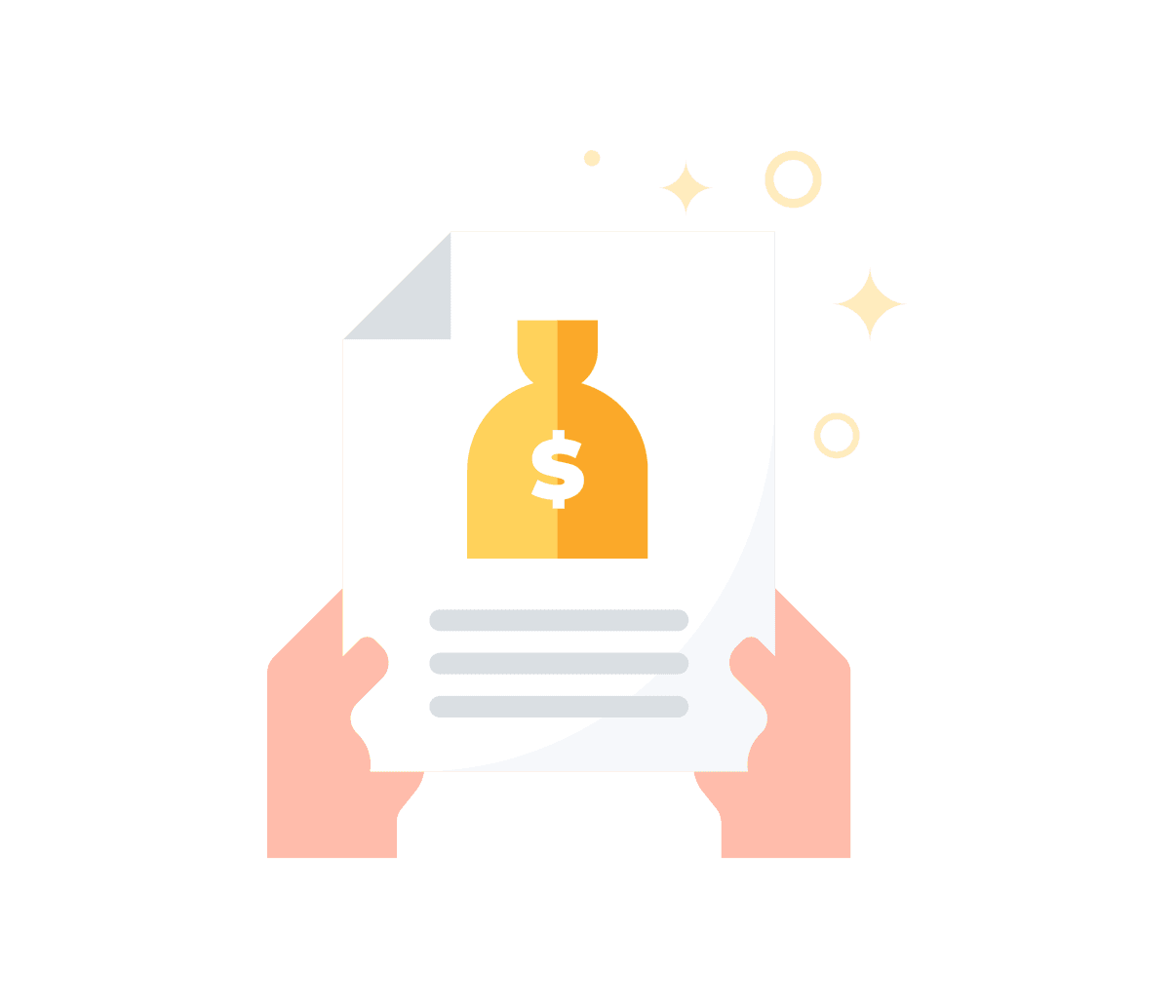Personal loans can be useful tools to consolidate debt, pay for unexpected expenses like medical bills, and finance larger projects, such as home renovations. But in order to access those funds, you have to meet lender requirements. And when it comes to personal loans, those can vary widely. But generally, most lenders evaluate your credit profile based on a few factors, such as your credit score, debt-to-income ratio (DTI), payment history, and income.
We'll cover what lenders look for in a personal loan application, so you can put your best foot forward.
How to qualify for a personal loan
Every lender will have its own requirements to qualify for a personal loan. Here’s what most lenders consider.
- Your credit score: Lenders look at your credit score to determine the likelihood you’ll repay the loan based on previous behavior. You’ll typically need a FICO score of at least 670 to get a personal loan, but a higher score may help you land better terms. You still have options if your score is below 670, however. Some lenders publish minimum credit score requirements on their website, but in the table below you can see what they are for Credible partner lenders.
- Debt-to-income ratio: Your DTI is how much debt you have relative to how much income you have. Lenders typically want to see a ratio that’s below 35%, the lower the better. You can calculate your DTI by adding up your monthly debt payments and dividing them by your gross monthly income.
- Payment history: Lenders want to make sure that you can and will repay the loan, so if you have a history that includes late payments, that will be a strike against you. Keep in mind that late payments usually stay on your credit report for seven years, but they tend to have less impact on your score the older they are.
- Income requirements: You’ll have to meet the lender’s minimum income requirement to have your application considered. This will often be listed somewhere on its website.
Credible rating
Fixed (APR)
6.99% - 25.49%
Loan Amounts
$5000 to $100000
Min. Credit Score
700
Credible rating
Fixed (APR)
7.80% - 35.99%
Loan Amounts
$1000 to $50000
Min. Credit Score
620
Credible rating
Fixed (APR)
-
Loan Amounts
$2500 to $40000
Min. Credit Score
660
Credible rating
Fixed (APR)
8.49% - 35.99%
Loan Amounts
$1000 to $50000
Min. Credit Score
600
Credible rating
Fixed (APR)
8.98% - 35.99%
Loan Amounts
$1000 to $40000
Min. Credit Score
660
Credible rating
Fixed (APR)
8.99% - 29.99%
Loan Amounts
$5000 to $100000
Min. Credit Score
Does not disclose
Credible rating
Fixed (APR)
8.99% - 35.99%
Loan Amounts
$2000 to $50000
Min. Credit Score
600
Credible rating
Fixed (APR)
9.95% - 35.99%
Loan Amounts
$2000 to $35000
Min. Credit Score
550
Credible rating
Fixed (APR)
-
Loan Amounts
$5000 to $35000
Min. Credit Score
700
Credible rating
Fixed (APR)
11.69% - 35.99%
Loan Amounts
$1000 to $50000
Min. Credit Score
560
Credible rating
Fixed (APR)
11.72% - 17.99%
Loan Amounts
$3000 to $40000
Min. Credit Score
640
Credible rating
Fixed (APR)
-
Loan Amounts
$20000 to $200000
Min. Credit Score
660
Credible rating
Fixed (APR)
14.30% - 35.99%
Loan Amounts
$3500 to $40000
Min. Credit Score
640
Credible rating
Fixed (APR)
18.00% - 35.99%
Loan Amounts
$1500 to $20000
Min. Credit Score
540
All APRs reflect autopay and loyalty discounts where available | LightStream disclosure | SoFi Disclosures | Read more about Rates and Terms
How to improve your credit
There are several steps that you can take to improve your credit:
- Sign up for autopay: Missed payments can negatively impact your credit, so autopay is a great way to help ensure that you don’t get dinged. Plus, depending on the type of debts you have, you may even get a rate discount for doing so.
- Keep old credit accounts open: The length of your credit history and how much credit you have at your disposal impact your credit score. So though it may be tempting to close old accounts, keep them open to prevent your score from dropping.
- Become an authorized user: If you know someone who is open to it, becoming an authorized user on one of their credit accounts can quickly decrease your credit utilization, which could improve your score.
- Pay down credit card debt: If possible, lowering your revolving debt can greatly impact your score (credit utilization falls under “amounts owed,” which makes up 30% of your FICO score). It can also lower your DTI, making it easier to qualify for a personal loan.
- Ask for a credit limit increase: If your credit utilization is currently high, increasing your credit limit(s) can help you quickly lower that figure and thereby improve your credit.
How to get a personal loan with bad credit
If you have bad credit, there are things you can do to qualify:
- Get a qualified cosigner: If you don’t meet a lender’s credit requirements, adding a cosigner to your application who does meet those requirements can help you qualify. Keep in mind that they will be responsible for the loan payments if you stop making them, so it’s a big ask. And not all lenders accept cosigners.
- Get a secured loan: Another way to potentially qualify for a personal loan with bad credit is to get a loan that requires collateral. If you stop making payments, however, you could lose your collateral, so it’s a risk you need to weigh carefully.
- Look into loans from your bank or credit union: Some banking institutions will provide loans to those who have a strong, long-standing relationship with it, even if they have adverse credit.
How to find the best personal loan
While finding the best personal loan for your needs is the name of the game, what is equally important is choosing the right lender.
“Many people might point to their credit score, but honestly, the real game-changer is the lender you select,” Joseph Camberato, CEO and founder of National Business Capital, said. “Lenders and their approval criteria can be as different as night and day. Choosing the wrong lender could slam the door on your loan dreams or stick you with less-than-favorable terms.”
You’ll want to check the following when shopping around and comparing lenders:
- Minimum credit score and income requirements: This will be one of the first factors that will help determine if a lender is right for you. After all, you have to qualify in order to access funds.
- Maximum loan amounts: Lenders will also have a maximum loan amount that they’ll lend to qualified applicants. So understanding those cutoffs can also help you narrow down your options. Generally, loan amounts can range as low as $600 to $100,000 or more, depending on the lender.
- Loan terms: In general, lenders offer terms ranging from 1 to 7 years. The term length you select will impact not only how much interest you pay over the life of the loan, but also your monthly payment amount. A personal loan calculator can help you figure out your ideal term length, and then you can find lenders that offer those terms.
- APRs: The annual percentage rate (APR) includes the interest rate and any origination and mandatory administrative fees. So it’s more comprehensive than the interest rate alone and reflects the total cost of borrowing.
- Fees: While the APR will give you a solid idea about the total cost of the loan, it won’t account for fees that only apply in certain situations (for example, if you miss a payment). So take a close look at the associated fees when evaluating lenders.
Learn More: How To Get a Low-Interest Loan
How to apply for a personal loan
Here are the steps to apply:
- Gather your documents: Most lenders will need you to provide information such as a copy of your Social Security card or government-issued ID, recent pay stubs or W-2s, and utility bills. Having those ready can help speed up the application process.
- Shop around for lenders: Because personal loan terms can vary so widely, you’ll need to shop around to find one that offers the best terms for you.
- Prequalify: Once you have a list of potential lenders, it's time to prequalify, which doesn’t impact your credit. Prequalification shows you if you’re likely to qualify, and if so, what kind of terms you might get with each lender. Prequalification isn’t a formal offer of credit, however, so your final rate may vary.
- Complete the application with your preferred lender: Once you’ve chosen your ideal lender, you can complete its application as directed. At this point, the lender will conduct a hard credit check, which can temporarily lower your score. If approved, you’ll need to sign the loan documents to receive the funds.
“Always show up for your loan application looking like the best version of yourself,” Camberato said. “That means taking some proactive steps to strengthen your credit score, getting your paperwork ducks in a row, and having a solid plan for how you'll use and repay the funds.”
Personal loan approval FAQ
What documents are required for a personal loan?
It will depend on the lender, but you’ll generally need documentation that proves your income and contact information (such as pay stubs and utility bills that prove your address). You’ll also need to provide your Social Security number or Individual Taxpayer Identification Number (ITIN) so that the lender can run a credit check.
When should I get a personal loan?
It depends on your lender. Funding and approval times for personal loans vary, so you should check with your lender to ensure that you apply for the personal loan early enough to get your funds. If you need money ASAP, you’ll need to choose a lender that specializes in quick funding, such as online lenders.
What happens if I get denied a personal loan?
If you’re denied after completing a personal loan application, there is one notable consequence (other than not getting those funds) that you should be aware of: You will have undergone a hard credit inquiry, which can negatively impact your credit score. That’s why it’s important to prequalify to minimize the chances of a denial.
Can I get a personal loan with bad credit?
You may be able to get a personal loan with bad credit if you can find a lender that has more relaxed credit requirements, or allows secured loans or cosigners. However, keep in mind that adverse credit will typically result in less favorable loan terms, so you may end up paying more to borrow.


